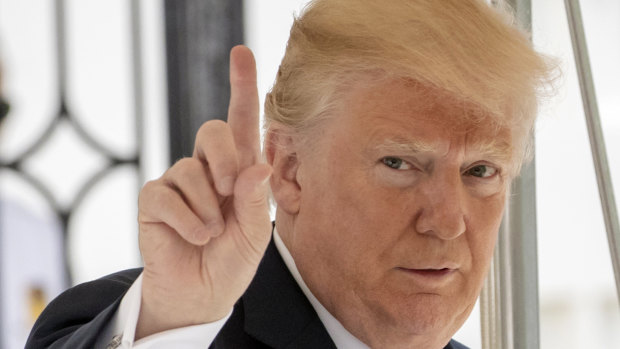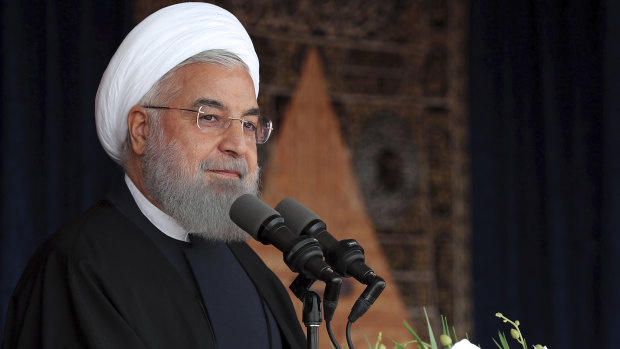What is the Iran nuclear deal?
The Joint Comprehensive Plan of Action was an agreement signed in 2015 under Barack Obama as president, and implemented in 2016 between six world powers and Iran. The deal lifted sanctions on Iran in exchange for Tehran slowing its nuclear research and development program and allowing UN weapons inspections. World powers feared Iran was on the path to making a nuclear weapon. The deal allowed Iran to sell its oil again and reintegrate into the global economy.
Who signed the deal?
Iran and the US, UK, Russia, France, China and Germany, sometimes referred to as the "P5+1" (the five permanent UN Security Council members plus Germany).
Why are we talking about it now?

Donald Trump signals to the press that he will come over to talk.Credit: AP
Because US President Donald Trump has declared his intention to scrap the deal. He believes it doesn't go far enough in restraining Iran's nuclear ambitions, and helps enable Iran to become a player in other conflicts, particularly in Syria and Yemen. Trump has called it "the worst deal ever made" and has called on the US Congress and Europe to "fix" it. Trump has complained about UN inspectors not being allowed onto Iranian military sites; about Iran's ballistic missile program not being part of the agreement; and about a "sunset" clause which could see the agreement end in as little as 10 years.
Where do the other signatories stand?
Britain, France, Germany, China and Russia remain committed to the accord as is. In the attempt to keep Washington in the deal, France's Emmanuel Macron and Britain's Boris Johnson have proposed opening talks on Iran's ballistic missile program, its nuclear activities beyond 2025 and its role in Middle East crises such as Syria and Yemen.
What about Iran?

President Hassan Rouhani.Credit: Iranian Presidency Office/AP
Iranian president Hassan Rouhani has said the deal could survive without the United States, but has also threatened to "confront America's plots against our country" by re-establishing a missile capability.
"We will not negotiate with anyone about our weapons and defences, and we will make and store as many weapons, facilities and missiles as we need," he said.
"We want to preserve our peaceful nuclear technology for electricity, medicine, agriculture and health... and we do not seek to threaten the world or the region".
When will we know what the US will do?
Trump has pledged to reveal his decision on Tuesday, at 2pm, Washington DC-time (4am Wednesday AEST). This comes ahead of the Saturday, May 12, deadline, when the US must renew waivers on sanctions on Iran. Should the US fail to, it would potentially mark the end of the US's active support for the deal.
If the US backs out, then what?
The US may unilaterally reimpose sanctions on Iran. If so, the US may find itself isolated among the other signatories. Hardliners in the Iranian government are likely to become more powerful as the economy dips; tension in the Middle East may rise, particularly between Iran and Saudi Arabia, and also between Iran and Israel. Oil prices are likely to rise, The Economist projects, between $US5 and $US10 per barrel.
with Reuters